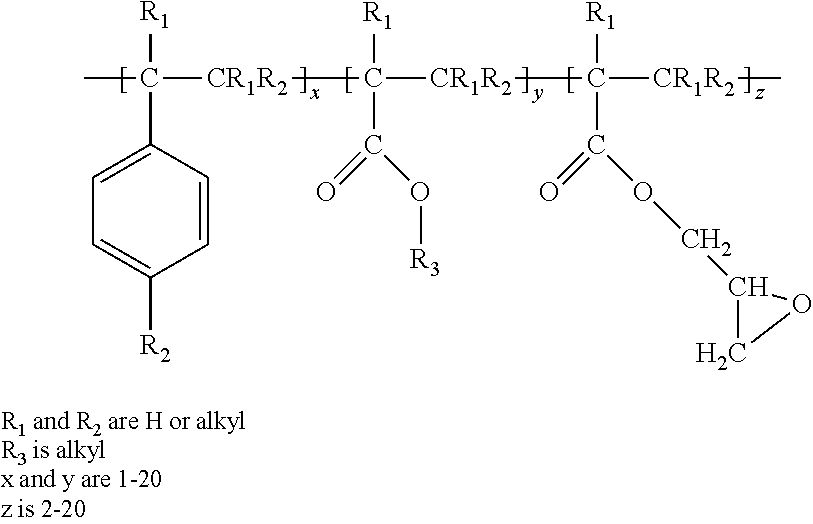Low Glass Transition Polyhydroxyalkanoates for Modification of Biodegradable Polymers
a technology of biodegradable polymer and low glass transition, which is applied in the direction of weaving, transportation and packaging, textiles and papermaking, etc., can solve the problems of biobased compositions when made into blown films, laminates or other thin layered articles, and do not have the undesirable effect of noise when manipulated or handled, so as to improve toughness, tear and puncture resistance properties
- Summary
- Abstract
- Description
- Claims
- Application Information
AI Technical Summary
Benefits of technology
Problems solved by technology
Method used
Image
Examples
example 1
Preparation of Reactively Extruded PBS / PHA Blends Using 66% Biobased High Molecular Weight P3HB-4HB Rubber Copolymer
[0136]In this example blends of rubber P3HB-4HB (Tianjin SOGREEN® 30% 4HB, Tg=−20° C.) and PBS were prepared with and without a peroxide branching agent. The PBS used was BIONOLLE® 1001MD (Showa Highpolymer Co.) which is a non-biobased, blown film grade material. The films were all prepared using a 16 mm PRISM twin-screw extruder. The compounding conditions were as follows: extruder temperature profile from inlet to outlet—175° C. / 175° C. / 170° C. / 170° C. / 165° C. / 165° C. / 150° C. / 150° C.; screw speed RPM ˜250. After compounding, each of the formulations was cast into a film for measurement of mechanical properties. Table 2 shows a summary of the formulations prepared and tested as well as the film mechanical properties measured. 100% PBS was added as a control in order to compare the changes in properties upon addition of PHA.
TABLE 2Summary of PBS / PHA blends data.Formula...
example 2
Preparation of Extruded PBAT / PHA Blends Using 66% Biobased High Molecular Weight P3HB-4HB Rubber Copolymer
[0138]This example is similar to Example 1 however the PBS was replaced by a non-biobased poly-butylene adipate terephthalate (PBAT, ENPOL® G7070F, Samsung Fine Chemicals). Also no peroxide was used in the formulation. In this example a blend of rubber P3HB-4HB (Tianjin SOGREEN® 30% 4HB, Tg=−20° C.) and PBAT were prepared without branching agent. As a comparison, a similar formulation is prepared but with a lower molecular P3HB / P3HB-4HB blend having 12-15% by wt. 4HB (MIREL® M4100 resin). The films were all prepared using a 26 mm twin-screw extruder at a rate of 80 lbs / hr. The compounding conditions were as follows: extruder temperature profile from inlet to outlet 160° C. / 175° C. / 170° C. / 165° C. / 160° C. / 140° C. / 140° C. / 140° C. / 140° C. / 140° C.; screw speed RPM˜350. After compounding, each of the formulations was cast into a film for measurement of mechanical properties. Table 3 ...
PUM
| Property | Measurement | Unit |
|---|---|---|
| molecular weight | aaaaa | aaaaa |
| molecular weight | aaaaa | aaaaa |
| Tg | aaaaa | aaaaa |
Abstract
Description
Claims
Application Information
 Login to View More
Login to View More - R&D
- Intellectual Property
- Life Sciences
- Materials
- Tech Scout
- Unparalleled Data Quality
- Higher Quality Content
- 60% Fewer Hallucinations
Browse by: Latest US Patents, China's latest patents, Technical Efficacy Thesaurus, Application Domain, Technology Topic, Popular Technical Reports.
© 2025 PatSnap. All rights reserved.Legal|Privacy policy|Modern Slavery Act Transparency Statement|Sitemap|About US| Contact US: help@patsnap.com


